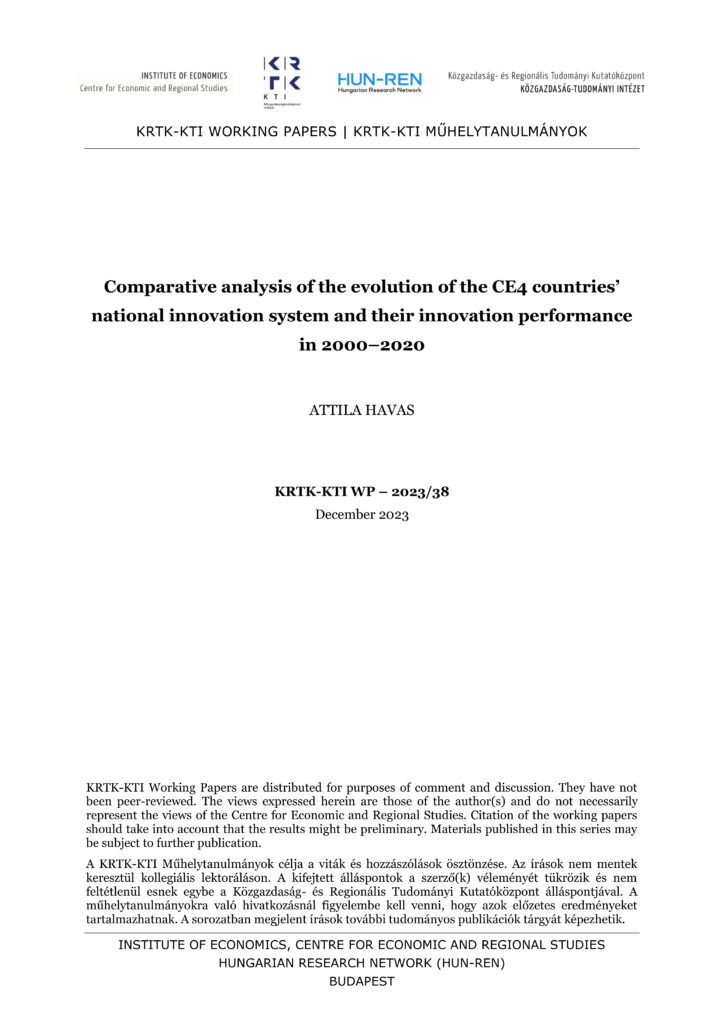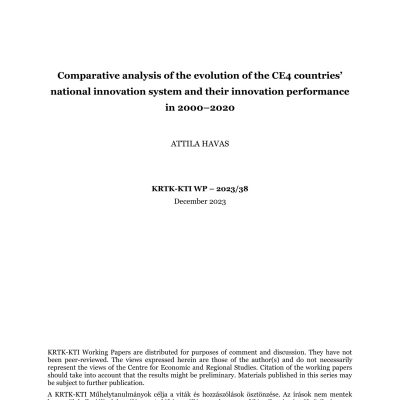This paper compares the evolution of CE4 countries’ (Czechia, Hungary, Poland, and Slovakia) national innovation systems, as well as their innovation performance. Its analytical framework draws on evolutionary (and institutional) economics of innovation.
Given the structural features and the level of socio-economic development in the CE4 countries, as well as the dominant way of thinking since the cold war, Western politicians, business people, analysts and journalists tend to share a ‘block’ view of these countries. Further, there is a noticeable – and certainly understandable – ‘drive’ also from the academic community to produce findings that can be generalised across the new EU member states, but at least for the CE4 countries, that is, to focus on identifying shared or similar features. Yet a closer look at the structure of the national innovation systems in these countries, as well as at their innovation performance, points to a different direction. While the structural composition of the research sub-systems of the CE4 countries showed a great diversity already in 2000, fairly significant changes have occurred since then almost in all countries, adding more colours to the observed diversity. Neither a similar structural composition of the research sub-system can be observed, nor a move towards a similar structure. Their innovation performance is also diverse.
Given the diversity among innovation systems, one should be very careful when trying to draw policy lessons from the ‘rank’ of a country as ‘measured’ by a composite indicator. The CE4 countries, therefore, need to avoid the trap of paying too much attention to simplifying ranking exercises. Instead, it is of utmost importance to conduct detailed, thorough comparative analyses, identifying the reasons for a reasonable or disappointing performance.



